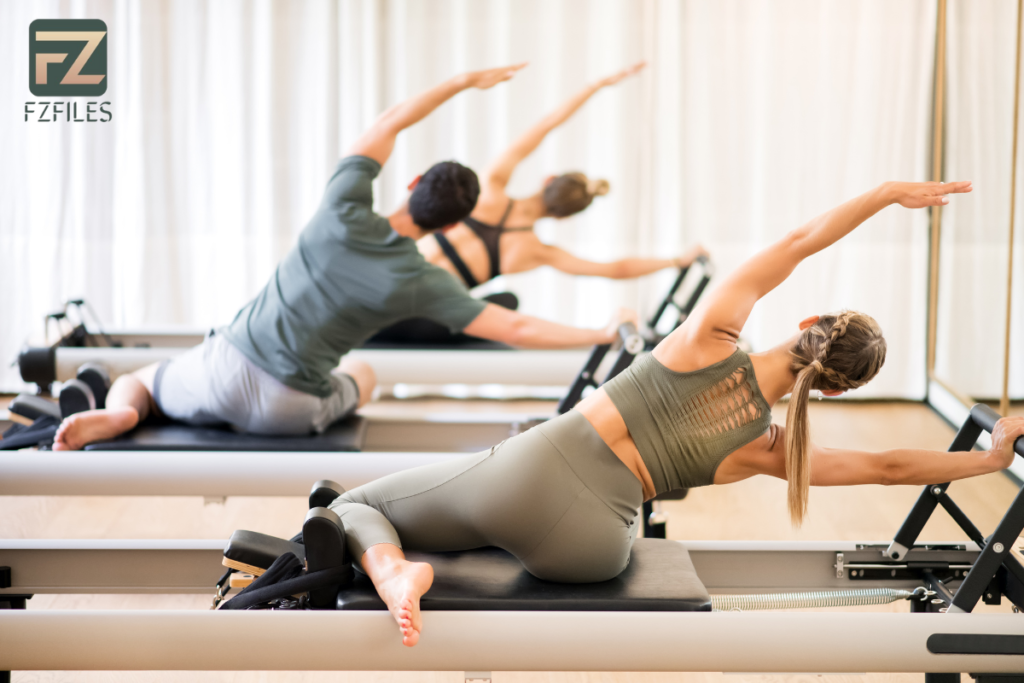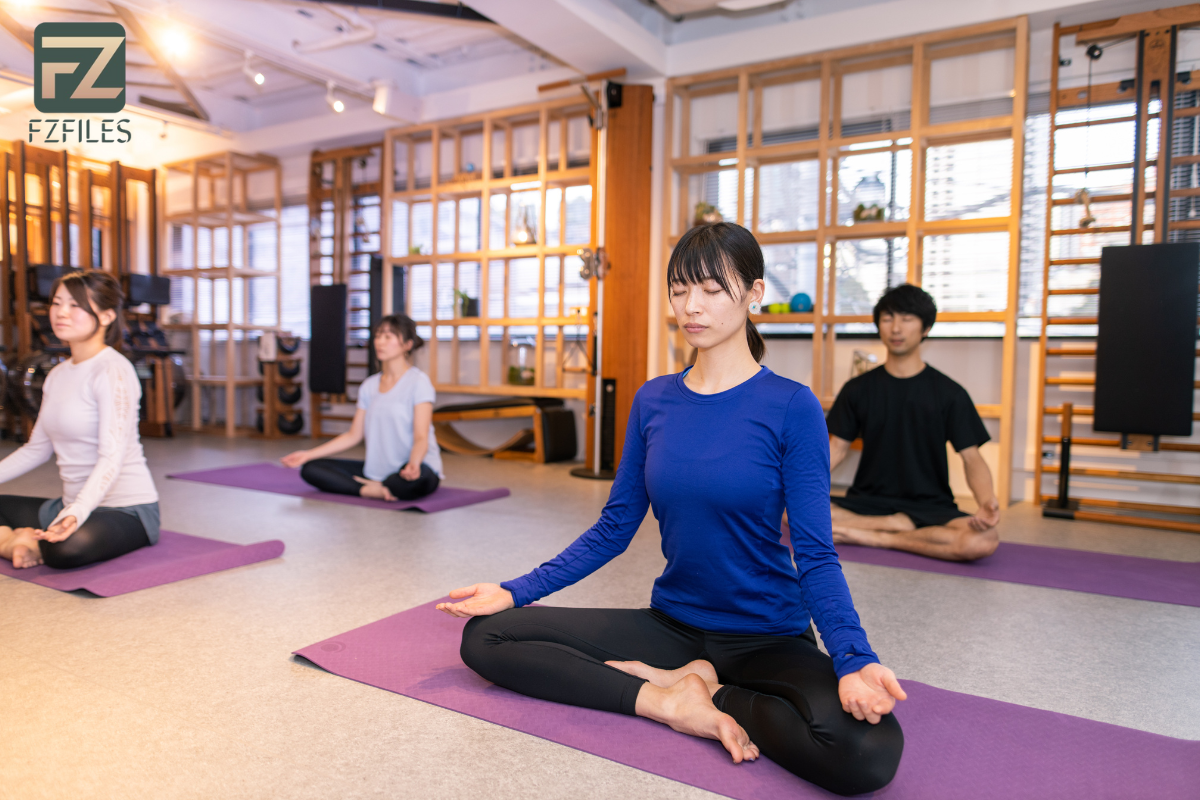Introduction to Yoga for Athletes
Yoga has long been celebrated for its physical and mental benefits, but in recent years, it has gained recognition in the athletic community for its potential to enhance sports performance. Whether you’re a runner, cyclist, weightlifter, or team sport athlete, integrating yoga into your training regimen can provide significant advantages. In this comprehensive guide, we’ll explore the benefits of yoga for athletes, essential poses, and how to create an effective athletic yoga routine tailored to your needs.
Benefits of Yoga for Sports Performance
Improved Flexibility and Mobility
Yoga is well-known for increasing flexibility, which is crucial for athletes. Enhanced flexibility can improve performance by allowing a greater range of motion and reducing the risk of injury. For example, runners and cyclists can benefit from increased hip flexibility, while weightlifters may find improved shoulder mobility advantageous.
Enhanced Strength and Balance
Yoga poses often require holding positions that engage various muscle groups, building strength and stability. This balanced strength development is particularly beneficial for athletes, as it supports overall body harmony and helps prevent imbalances that could lead to injury.
Better Breathing and Endurance
Breathing exercises (pranayama) are a core component of yoga. Learning to control and optimize breathing can significantly improve an athlete’s endurance and performance. Proper breathing techniques increase oxygen intake and help maintain energy levels during high-intensity activities.
Mental Focus and Stress Relief
Athletes often face intense physical and mental demands. Yoga’s emphasis on mindfulness and meditation helps cultivate mental clarity, focus, and stress management. This mental discipline can translate into better performance during competition and training.
Faster Recovery
Incorporating yoga into an athlete’s routine can aid in recovery by promoting blood flow, reducing muscle soreness, and enhancing relaxation. Gentle yoga sessions can serve as active recovery, helping athletes return to peak performance more quickly.
Essential Yoga Poses for Athletes
To get started with yoga, athletes should focus on poses that target key muscle groups and address common areas of tension. Here are some essential yoga poses for athletes:
Downward Dog (Adho Mukha Svanasana)
Benefits: Stretches the hamstrings, calves, and shoulders; strengthens the arms and legs; improves overall body flexibility.
How to Do It:
- Begin your hands and knees, with your wrists under your shoulders and knees under your hips.
- Spread your fingers wide and press solidly into the mat.
- Fold your toes under and lift your hips towards the roof, fixing your legs.
- Keep your head between your arms and look towards your navel.
- Hold for 5-10 breaths, then release.
Triangle Pose (Trikonasana)
Benefits: Stretches the hips, groin, hamstrings, and spine; strengthens the legs, knees, and ankles; improves balance and stability.
How to Do It:
- Stand with your feet about 3-4 feet apart, right foot pointing forward, left foot turned slightly inwards.
- Stretch out your arms lined up with the floor, palms overcoming.
- Reach forward with your right hand and tilt your torso, placing your right hand on your shin or the floor, and extend your left arm towards the ceiling.
- Gaze towards your left hand and hold for 5-10 breaths.
- Repeat on the other side.
Pigeon Pose (Eka Pada Rajakapotasana)
Benefits: Stretches the hip flexors, glutes, and lower back; relieves tension and improves hip mobility.
How to Do It:
- Start in a tabletop position, then bring your right knee forward and place it behind your right wrist.
- Broaden your left leg straight back, keeping your hips square.
- Slowly lower your torso over your right leg, resting on your forearms or extending your arms forward.
- Hold for 5-10 breaths, then switch sides.
Creating an Athletic Yoga Routine
Assess Your Needs
Identify the specific areas where you need improvement or relief. Whether it’s flexibility, strength, balance, or recovery, understanding your needs will help tailor your yoga practice to your athletic goals.
Warm-Up and Cool Down
Always start your yoga practice with a warm-up to prepare your muscles and joints for movement. Dynamic stretches and gentle poses can serve as a warm-up. Similarly, end your practice with a cool-down that includes relaxation and restorative poses.

Balance Your Routine
Incorporate a mix of poses that target different muscle groups and address various aspects of fitness, such as flexibility, strength, balance, and recovery. This balanced approach ensures comprehensive benefits and prevents overuse injuries.
Practice Consistently
Consistency is critical to receiving the rewards of yoga. Aim to practice regularly, even if it’s just a few minutes each day. Establishing a routine can help you integrate yoga seamlessly into your overall training regimen.
Sample Yoga Routines for Athletes
Routine 1: Flexibility and Recovery (30 minutes)
Warm-Up:
- Cat-Cow Pose (Marjaryasana-Bitilasana): 2 minutes
- Downward Dog (Adho Mukha Svanasana): 1 minute
Main Poses:
- Standing Forward Bend (Uttanasana): 2 minutes
- Triangle Pose (Trikonasana): 2 minutes on each side
- Pigeon Pose (Eka Pada Rajakapotasana): 2 minutes on each side
Cool Down:
- Seated Forward Bend (Paschimottanasana): 2 minutes
- Legs-Up-the-Wall Pose (Viparita Karani): 5 minutes
Routine 2: Strength and Balance (45 minutes)
Warm-Up:
- Sun Salutations (Surya Namaskar): 5 minutes
Main Poses:
- Warrior I (Virabhadrasana I): 2 minutes on each side
- Warrior II (Virabhadrasana II): 2 minutes on each side
- Tree Pose (Vrksasana): 2 minutes on each side
- Boat Pose (Navasana): 2 minutes
Cool Down:
- Child’s Pose (Balasana): 3 minutes
- Savasana (Corpse Pose): 5 minutes
Expert Tips for Athletes
Find a Qualified Instructor
Consider taking classes with a certified yoga instructor who has experience working with athletes. They can give customized direction and guarantee you’re rehearsing securely and actually
Listen to Your Body
Focus on your body’s signs and try not to propel yourself excessively hard. If a pose feels uncomfortable or causes pain, modify it or skip it altogether.
Use Props
Go ahead and yoga props like blocks, lashes, and reinforces to help your training. Props can assist you with accomplishing appropriate arrangements and make presents more available.
Integrate Mindfulness
Yoga is not just physical exercise; it also involves mental focus and mindfulness. Incorporate breathing exercises and meditation into your practice to enhance your mental clarity and stress management.
Stay Hydrated
Hydration is essential for optimal performance and recovery. Drink plenty of water before, during, and after your yoga sessions.
Conclusion
Yoga offers a multitude of benefits for athletes, from improved flexibility and strength to better mental focus and faster recovery. By incorporating yoga into your training regimen, you can enhance your overall athletic performance and well-being. Remember to practice consistently, listen to your body, and seek guidance from qualified instructors.

[…] well-being. To combat these challenges, more individuals are turning to holistic practices like yoga and meditation. These ancient disciplines offer a natural and effective way to enhance mental […]